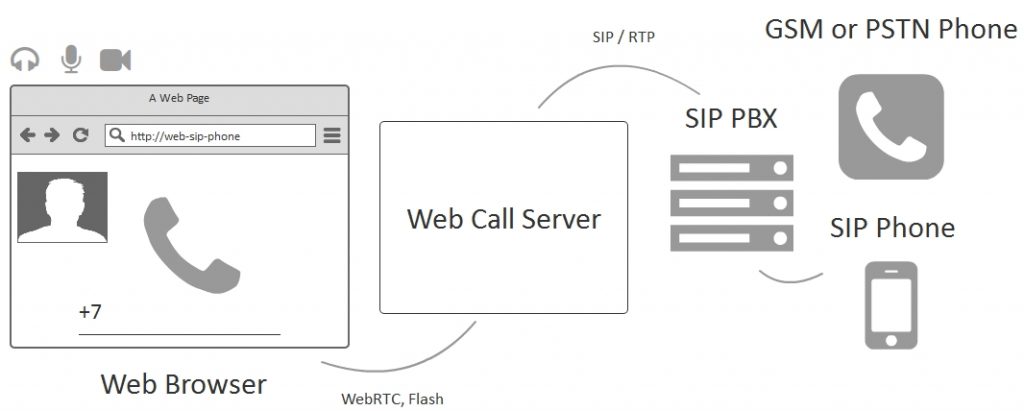VoIP is probably an integral part of any telecommunications infrastructure under construction today. However, every time a decision is made to implement VoIP, the question arises: in what capacity should it be presented?
Using Voip phone system allows companies to solve many communication tasks using one data channel. However, practice shows that the implementation of telephony solutions based on IP does not always have an absolute advantage, and sometimes even more expensive than the use of traditional telephony or PBX installation in the office. By the way, with the advent of new implementations of DSL technology today you can submit to the office the Internet and the phone on the same line or to ensure the transmission of multiple telephone conversations over a single copper pair, and notice that there is no IP. So why do we need these voice services based on IP and in what cases should we implement them?

Operator services
The most active adherents of VoIP technology in all its manifestations should be considered large telecom operators, who benefit from the provision of VoIP services both explicitly and implicitly. The mere appearance of numerous telephone cards at low prices indicates that VoIP is in demand. However, the same is true for operators in offices. For example, you can set up a PBX to make inexpensive long distance and international calls through the pool operator, the call to which passes as a normal city call and is not charged. However, even if telephone companies switch to paid calls within the city, their cost in any case will be lower than the tariffs for long-distance calls.
Another variant of VoIP services provision can be found in many operators offering Internet connection with speeds up to 100 Mbps. In particular, company “HotTelecom” directly on the page where you can order the connection of your apartment or office to the Internet, there is a noticeable link to the possibility of connecting with this one or more IP-phones. As you understand, here you can allocate a city number for each of them or use one phone for incoming calls and the rest for outgoing calls, which, of course, saves the customer’s money.

Office complexes
Moving on to office buildings, we will divide them into three categories, reasoning from the perspective of relevance of IP-telephony. The first category is premises with laid SCS, which contains wiring for computer network connection and telephone wires, so that the connection of traditional phones is not difficult and IP-telephony is unlikely to be needed inside the building. However, in this situation, the option of using VoIP services outside the corporate network will be suitable.
The second category of buildings is represented by those premises where wiring is laid only for the computer network – respectively, the telephone wires will have to be pulled separately. In this case, IP-telephony can be used as a permanent solution to communicate with the outside world, or as a way to get to a particular switch that does not belong to the operator, and the company itself, calls from which go into the city directly through the network of telephone companies.

The third category of buildings is distinguished by the fact that they do not have SCS and the laying of cable structure is difficult. For such complexes it will be most logical to use Wi-Fi networks, because they provide, among other things, the possibility of VoIP application, both in wired and wireless variant. For example, the company ZyXEL offers a cordless phone that works with the VoIP gateways available in the network, as well as supporting the services of some global providers. As you have already understood, the ZyXEL P-2000W EE is a complete network device and supports the 802.11g standard.
Using open services
Recently, Skype has become very popular, which, according to its supporters, in the future will allow the whole world to speak for free. This software turns out to be really convenient for calls between two “skypeppers”. Skype has a grid of rates, not accidentally called Skype Global: the cost of calling anywhere in the world does not depend on where the caller is, and ranges from $ 0.02 to $ 0.05 on average worldwide. For Russia, the actual tax rate is $0.05.
Thus, it is logical to assume that the use of Skype and similar services is acceptable for small companies to call, for example, in their representative offices or just make inexpensive long distance and international calls. It should be noted that Skype is supported today by many manufacturers of hardware, and this service in our time can be used both with wired phones that connect to the USB port of the computer, and wireless devices working over Wi-Fi and Bluetooth. What’s more, NETGEAR has released a phone that “tie in” to a single Skype username, and it can be used to connect to a computer’s USB port or wireless devices that use Wi-Fi and Bluetooth.
Developers of Skype are just working on creating a product that can be used in small companies, where not so principled clear phone structure and keeping conversations secret from anyone.
Trade secrets and branch network
For companies with many branches, the concept of Skype may seem to be appropriate for communication between cities, but alas, in some cases, the subject matter and content of conversations are fundamentally important information that should not be disclosed under any pretext. In addition, the use of open services does not allow you to put order in the corporate infrastructure, say, by unifying all numbers and creating a single network for incoming and outgoing calls. In such cases, communication gateways of various scales are used. And today they can be represented as expensive systems supporting several thousand telephone sets, or small products (for example, Avaya IP Office) that combine functionality and availability. The same Avaya company is planning to launch a special product One-X Quick Edition on the Russian market. It is an IP phone that works without a communications server: the devices themselves find each other on the network and share IP addresses with each other. This approach is convenient when IP-telephony is in demand by dozens or even other employees.
However, whatever the “iron” approach, it implies the use of own equipment. And it provides an opportunity of data encryption, organization of interregional telephony via secure channels (by the way, long-distance communication will also be free for the company) and internal corporate services, such as voice mail or even call-center.
From VoIP to multimedia
But companies that have already chosen VoIP as their primary means of corporate communication can now move on and improve their approach to the use of digital services. The idea is to consolidate all communication capabilities on one multimedia server. Let’s show a sample of the integration process on the example of mobile operators – today you can send a request to an operator by e-mail, just call the call-center or request information via SMS. In principle, nothing prevents such integration on the basis of corporate infrastructure, of course, if the company has such a need, as well as the means for its implementation.

With the integration of e-mail, instant messaging and telephony, it is possible to provide employees with many opportunities, up to the fact that calls coming to the phone of an employee who is on a business trip, will be forwarded to the IP-phone installed on his laptop, and then – on the cell phone. And if he does not answer, the person can be automatically “apologized” by the server, and the employee is sent an e-mail with the phone of the caller and, for example, a link to a voice message. Integration of video calls into a single network allows making video calls to any subscriber of the corporate network, and integration with the system of fast messages – in parallel with video to transmit some quotes or information. Note here the products of the company Nortel, which has long been engaged in multimedia communication servers. Their solutions, based on Sun’s hardware platform, create exactly such an infrastructure that combines e-mail, instant messaging, telephony and video conferencing. On forums, you can often see Nortel employees talking to their laptops.
Conclusion
Summing up, we can say that the approach to IP-solutions not as to technologies, but as to services, perhaps, today is the most adequate, because the services can be provided as its own IT-services, and the provider or even free client Skype, and the choice of the method of providing services depends on the needs of the company and the specifics of its activities. That is why all the approaches considered will continue to develop in the coming years, and each of the ways of service implementation will attract certain groups of customers. Thus, multimedia servers will be in demand by large companies, solutions based on IP Office and similar systems – the average, and Skype products will use small firms whose telephone conversations do not contain a trade secret.

































